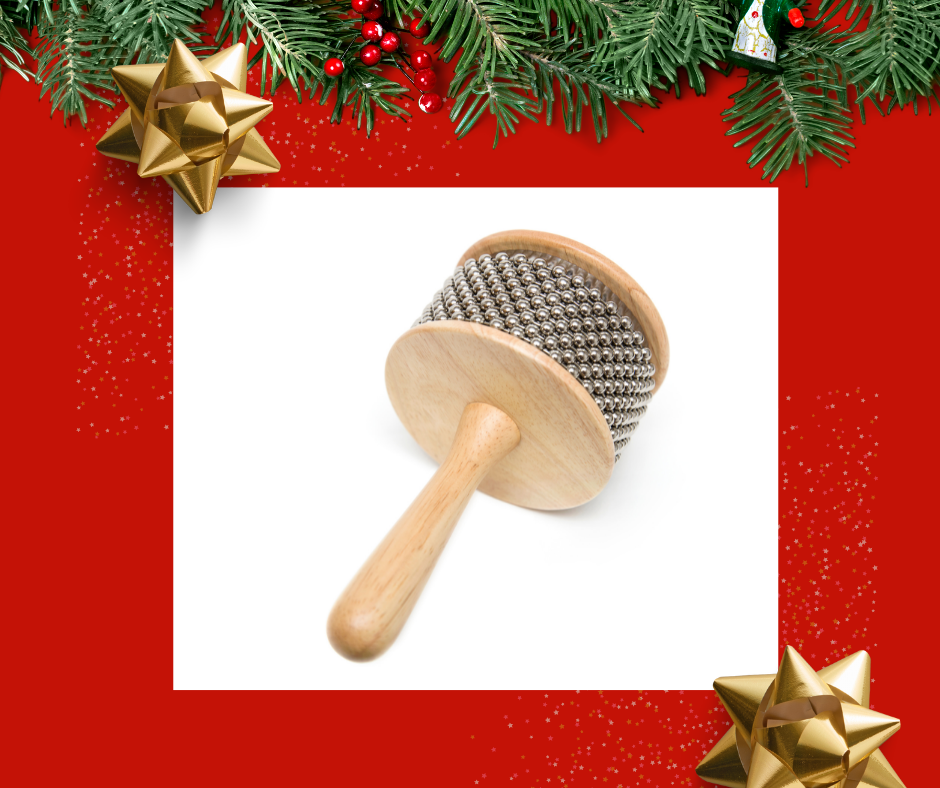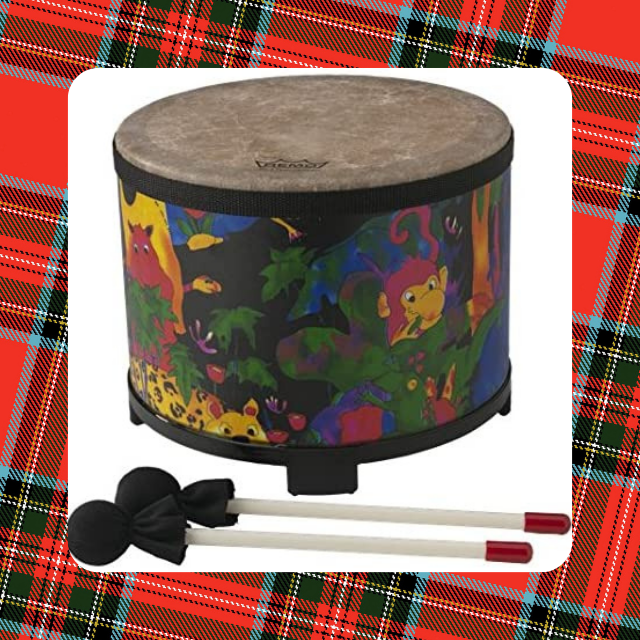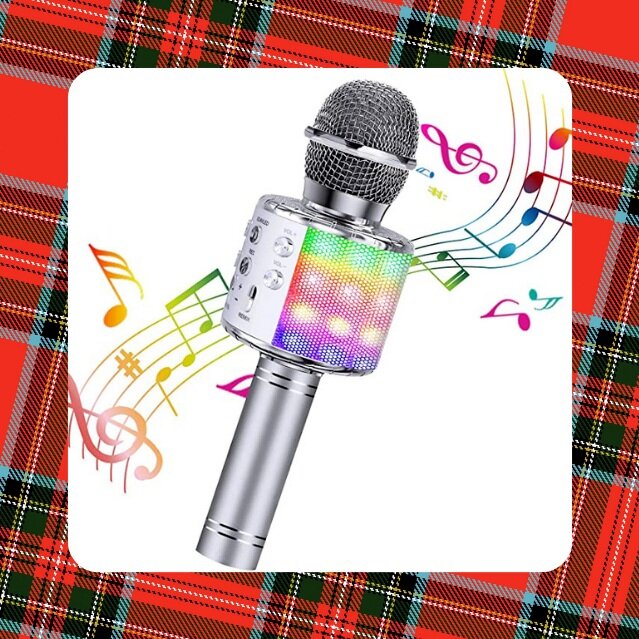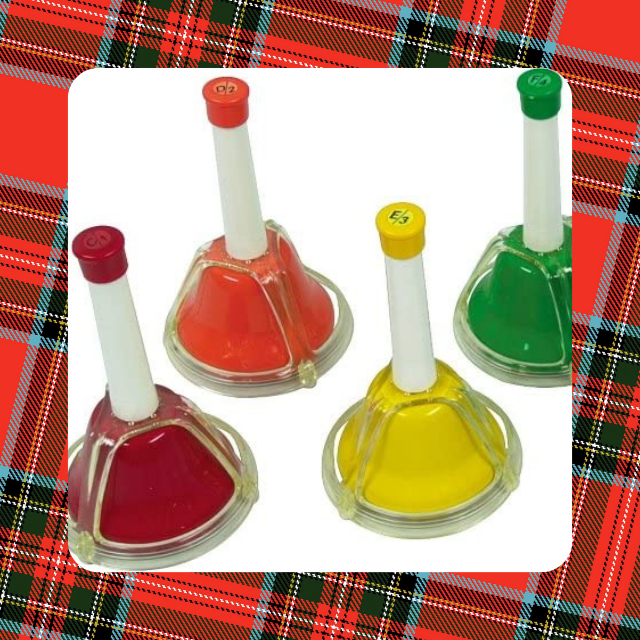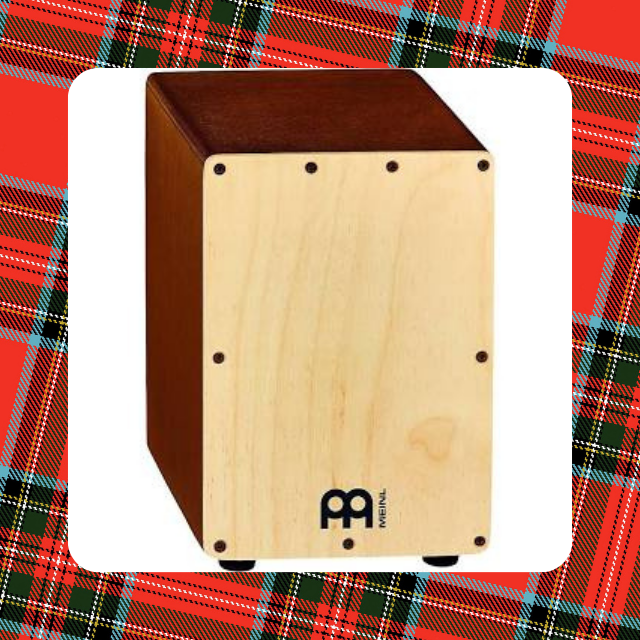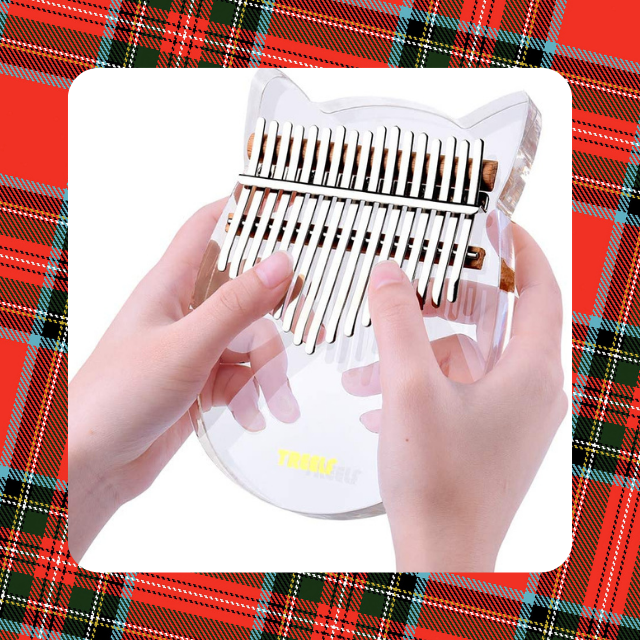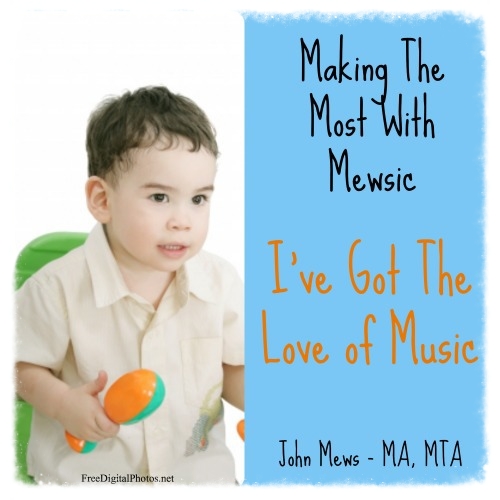
BLOGS
Educational blogs for parents and professionals
Mewsic Moves Spotlighted in Undivided Article for Transformative Music Therapy Approaches
In a recent blog by Undivided, Mewsic Moves was highlighted for its impactful use of music therapy to support neurodiverse clients and those with neurologic conditions throughout Los Angeles. The article provides an introduction to music therapy, explaining its benefits, especially for children with disabilities. It also discusses how Mewsic Moves tailors therapeutic approaches to meet the unique needs of each individual, using music as a powerful tool for communication, emotional expression, cognitive and physical development.
You can read the full article here.
Thank you Undivided for all the support you provide! Check them out here:
John Mews, LMFT, NMT
Embracing Neurodiversity: Evolving Autism Care Beyond ABA Therapy
In recent years, discussions surrounding autism spectrum disorder (ASD) and its treatment have evolved significantly. Traditionally, Applied Behavior Analysis (ABA) therapy has been the predominant approach for managing the behaviors of children with autism. Some still recommend up to 20 hours of ABA per week. However, there is a growing acknowledgment of the limitations and criticisms associated with ABA therapy.
Numerous articles delve into the critiques and hurdles associated with Applied Behavior Analysis (ABA) as the predominant therapy for children diagnosed with Autism Spectrum Disorder (ASD). Below are a few examples:
1. The Controversy Around ABA by Child Mind Institute.
2. ABA Therapy Controversy by Total Care Therapy
3. The Controversy over Autism’s most Common Therapy by Spectrum Autism Research News
4. Concerns About ABA-Based Intervention: An Evaluation and Recommendations by Journal of Autism and Developmental Disorders
As our comprehension and appreciation for neurodiversity grows, and as we aim for methods that are both inclusive and efficient, it becomes imperative to delve into alternative viewpoints. This includes considering approaches that view autism as a neurological condition rather than solely emphasizing behavioral modification. After all, Autism Spectrum Disorder (ASD) is classified as a neurological and developmental disorder, not solely a behavioral one.
Autism as a Neurological Condition
Autism spectrum disorder is a complex neurodevelopmental condition characterized by differences in social interaction, communication, and behavior. Research suggests that autism has strong neurological underpinnings, with differences in brain structure and function compared to neurotypical individuals. Viewing autism through a neurobiological lens highlights the importance of addressing the core challenges individuals with autism face, such as sensory sensitivities, executive functioning difficulties, and atypical processing of social cues.
Questions about ABA Therapy
ABA therapy is a behaviorally based intervention that aims to modify and shape behaviors through reinforcement techniques and some still practice reward and punishment in their ABA sessions. While it has been widely used and has shown some benefits for individuals with autism, there are significant concerns and criticisms associated with this approach. Critics argue that ABA therapy focuses excessively on normalization and compliance, often at the expense of the individual's autonomy and well-being. Additionally, ABA's emphasis on outward behavior modification may overlook the underlying neurological differences and fail to address the unique needs of individuals with autism.
Moving Towards Neurodiversity and Acceptance
Treating autism as a neurological condition rather than solely a set of behaviors encourages a shift towards a more holistic and inclusive approach. Embracing neurodiversity acknowledges the inherent value and strengths of individuals with autism, promoting acceptance and inclusion in society. Instead of viewing autism as something to be fixed or normalized, this perspective emphasizes providing support and accommodations that align with the individual's neurobiological profile and preferences.
Alternative Approaches to ASD
In recent years, various alternative approaches to ABA therapy have gained attention and research support, prioritizing improved quality of life and self-determination for individuals with autism. These approaches include:
Strengths-Based Approaches: Recognizing and building upon the strengths and interests of individuals with autism to support their development and well-being.
Sensory Integration Therapy: Addressing sensory sensitivities and difficulties through structured sensory experiences to promote self-regulation and comfort.
Social Skills Training: Providing targeted interventions to improve social communication and interaction skills, tailored to the individual's needs, preferences and/or limitations.
Occupational Therapy: Supporting individuals with autism in developing adaptive skills for daily living and promoting independence in various contexts.
Acceptance and Commitment Therapy (ACT): Focusing on acceptance, mindfulness, and values-based behavior change to help individuals with autism lead meaningful and fulfilling lives.
Neurologic Music Therapy: (NMT) is a scientifically and holistically validated treatment that harnesses the power of music to influence the brain and its neural responses. Its benefits encompass improving communication and social skills, regulating emotional responses, addressing sensory needs and enhancing overall cognitive development.
As our understanding of autism continues to evolve and we understand the variations of the spectrum, it's essential to reevaluate traditional approaches to treatment and embrace more inclusive and person-centered perspectives. By shifting the focus from behavior modification to addressing the underlying neurological differences, we can better support the diverse needs and strengths of individuals with autism. While ABA therapy may have a place in the spectrum of interventions, it's crucial to explore alternative approaches that prioritize acceptance, autonomy, neurobiology and well-being. Ultimately, by embracing neurodiversity and adopting a more nuanced understanding of autism, we can create a more supportive and inclusive society for all.
At Mewsic Moves, our mission is to foster a culture of respect and acceptance for every individual, irrespective of their limitations. We prioritize autonomy, aiming to boost confidence and encourage self-expression and confidence. Through our neurologic music-centered approach and acceptance-based therapy, we empower individuals to embrace their true selves while also aiding them in achieving their personal goals. Our programs and tailored supports are flexible, adapting to the unique needs and communication styles of each client.
Our services include group and individual support in our 3 locations: Santa Monica, Torrance and Long Beach, CA. For more on our group programs check out the links below.
Glee Choir: www.mewsicmoves.com/glee-choir
Rock Band: www.mewsicmoves.com/rock-band
Music based social skills groups: www.mewsicmoves.com/social-skills
We offer a free 15-minute consultation and are excited to explore how our neurobiologically informed Music Therapy can support your loved one through a treatment grounded in acceptance and research.
Click here to schedule your FREE 15-minute consultation. We look forward to supporting you.
Top 5 Therapeutic Musical Toys For Children Of All Abilities: With Video Resources
After writing our first top therapeutic toy blog back in 2014, “TOP 10 MUSICAL TOYS FOR CHILDREN WITH AUTISM” and having it as our top read blog we continued to write again in 2020, “TOP 11 THERAPEUTIC MUSICAL TOYS FOR CHILDREN WITH SPECIAL NEEDS”. Since both of these resource lists has been such a popular read we would love to continue our holiday tradition and offer you yet another music therapy toy/instruments resource list! Plus much more this year!
Everyday we use unique, fun, motivational and engaging music instruments in our music therapy programs to help address multiple goals. Many family members and parents struggle during this time to find the “perfect gift” or “perfect toy” for the little ones on their gift lists, especially for some that have neurodiverse or developmental needs. We want to continue our Mewsic Moves resource holiday tradition and help you find that perfect musical toy(s) that provides exponential value.
This year we wanted to make our list not only beneficial but educational as well. So this year we are providing a short video that showcases one of our of amazing Neurologic Music Therapists, Zach, giving you a musical example of how we use the instrument as well as sharing some of the therapeutic value in each instrument. We know you will find much value in this years musical therapeutic toy list!
1. Cabasa
The cabasa is a versatile and unique instrument used in latin music that many children are drawn to as many have never seen one or used one before. It has bright shiny chains of beads that surround it and make a sound similar to a maraca as you roll the beads around the instrument. The cabasa ranges from large or smaller sizes as well as plastic or wood. We prefer the larger wooden cabasas as they provide better weight for proprioceptive input and pressure.
Cabasa can support:
Sensory processing & integration
Regulation
Body awareness
Speech and communication
Palmer grap control
For more details or to buy click here
2. Xylophone
The xylophone is one of our most used instruments as its transportable, easy to carry, and mimics the tonality and notes of a piano. The xylophone that we are adding to our list this year is one of our favorites as it can fold in half and some come with a carrying case. You can use one side as the major scale (similar to
white notes on piano), and the other side (the black notes) can be used to improvise songs together on a pentatonic scale which is fun to use as there are “no wrong notes”. We also love to add colored stickers to our xylophones and play music together through colors versus actual notes. It makes playing easier, fun and much more successful.
Xylophone can support:
Sustained attention
Joint attention
Communication skills (completing circles of communication)
Cognitive and impulse control skills (stop and go)
Turn taking
Eye-hand coordination
Gross motor skills
For more details or to buy click here
3. Ocean Drum
The ocean drum comes in many sizes and we prefer smaller size that can fit in a younger child’s hands. The ocean makes a beautiful and peaceful sound of the ocean as you tilt it back and forth. It can also create loud crashing wave sounds if you play and tilt it faster. The ocean drum we have chosen this year provides a visual appeal with under water display of fish and has a transparent top so you can see the beads rolling which often is a visual anchor and sensory support for many of our clients.
Ocean Drum can support:
Regulation
Sensory processing and integration
Turn taking
Cognitive control
Motor control and modulation
Sustained attention
Mindfulness and meditation
For more details or to buy click here
4. Hand/Desk Bells
Our younger clients love these bells! They are colorful and you can play them by pressing the handle or lifting them and striking them like a traditional bell. These bells also have a color sequence that aligns with the Cmajor scale that we use to work on color matching, sequencing, early music education and much more!
Hand Bells can support:
Working memory
Sequencing
Turn taking
Communication
Cognitive skills - colors and counting
Early music education
Early reading skill development
For more details or to buy click here
5. Gathering Drum
The gathering drum is a fun communal drum that sits on the floor and is perfect for circle time or gathering around with friends or family to join and play together. We prefer the larger gathering drum as it holds much space for friends to join around and it also provides a large deep base sound that fills the room as well as deep into your body. The gathering drum is one of our favorite drums to use as it can also help support impulse control as it has a large range in sounds from big and vibrational to more subtle and soft.
Gathering drum can support:
Cognitive control
Joint attention
Sustained attention
Modulating emotions
Self regulation
Co-regulation
Provides proprioceptive feedback
Speech & communication
Social goals
Bonding
For more details or to buy click here
I hope you find value in this list as well as the educational videos that we have provided to help give you some guidelines on how to use these instruments in a therapeutic way. We are always excited to share our resources with you to use with your family at home or with your clients in your office or schools. Music is truly motivational and transformational and we love to share the gifts of music with you. Please feel free to reach out to us if you have any questions about the appropriateness of any instruments with your child or clients.
All of us at Mewsic Moves wish you and your family a musical holiday!
Gift the gift of music this holiday season.
Let's be social:
PLEASE SHARE, PIN, LIKE AND LEAVE YOUR COMMENTS BELOW AS WE LOVE TO HEAR FROM YOU!
Top 11 Therapeutic Musical Toys for Children With Special Needs
After writing my first top therapeutic toy blog back in 2014 “TOP 10 MUSICAL TOYS FOR CHILDREN WITH AUTISM”, it has become the number one most read blog and resource in my entire list! So it's time for an update!
I get multiple emails and questions directly from parents and therapists all the time asking how they can use their instruments at home as a therapeutic tool or what instruments they should buy to help with their child/clients therapeutic goals.
This is the time of the year when many families and friends struggle with what toys or gifts to give to their little ones and what a better way than to get them something that is both fun and therapeutic.
These are the top 11 favorite instruments that I use in my sessions that continues to offer so much therapeutic value, fun, engagement and overall success in each of my clients therapy goals.
1 - Floor Drum
Drums vary as much in price as they do in shapes and sizes, sounds and color! I use many varieties of drums in my sessions but I want to share this specific remo drum with you. This drum is sturdy, strong and has great acoustic sounds and vibration. This drum can sit easily on the floor and be played individually or together with 2 or 3 friends as a gathering drum. Oh, and did I mention it's affordable?!
Drums can help support:
Impulse Control
Eye-Hand Coordination
Turn-Taking
Focus and Attention
Auditory Skills
Regulation Skills
In a group it can help with social-emotional goals, non-verbal social cues and skill development
For more details click here
2 - Karaoke Microphone
Microphones can be so much fun to work on multiple goals from speech and language to increasing self-esteem. I prefer using microphones where you can manipulate the sounds to keep my clients engaged in the music process, to keep it fun and therefore better engagement and participation in achieving the therapeutic goals.
Microphones can help support:
Speech and Communication Skills
Self-Esteem
Social-Emotional Development
Creative Expression
Social Cues and Skills
For more details click here
3 - Shakers
Shakers are a staple in my music therapy instrument options. Shakers are always a fun welcome to any music activity in my clients sessions. Shakers and maracas are interchangeable in most of my sessions.
Shakers can help support:
Social Skill Development
Gross and Fine Motor Skills
Eye-Hand Coordination
Educational Goals - colors, counting, etc.
For more details click here
4 - Lollipop Drum
These drums are a favorite choice for many of my younger clients. I choose the lollipop drums as they are very light weight and have a handle to help guide or sustain more controlled movements in my music therapy sessions.
The Lollipop drum can help support:
Eye-Hand Coordination
Gross Motor Skills
Visual Perception and Eye Tracking
Regulation Skills
Social Skills and Cues
Joint Attention and Play
For more details click here
5 - Bells
I had an intern many years ago that introduced these bells to me and I have used them ever since. Children love these bells as they are colorful and you can play them both by ringing them or tapping the top of the handle.
Bells can help support:
Early Reading Skill Development
Educational Goals - colors, counting and letter recognition
Early Music Education
Social Skills
Focus and Attention
For more details click here
6 - Steel Tongue Drum “Happy Drum”
This is a new addition to my instrument collection and a favorite by clients of all ages. This drum sits on your lap and is easy to play as the tones are in a tonal scale that is always in harmony as you play.
Tongue drums can help support:
Mindfulness
Meditation
Regulation skills
Social - Emotional skills
Eye-Hand coordination
Self-Expression
For more details click here
7 - Cajon
The cajon is also a new addition to my musical toolbox. This is such a fun instrument for all ages; children love the idea of sitting on an instrument and being able to play it in a variety of ways and feeling the rhythmic vibrations throughout their body. The cajon is a beautiful strong instrument and comes in various sizes. I prefer the larger sizes that can comfortably allow both my older adult clients as well as my younger clients to safely sit on it and play.
Cajon’s can help support:
Self-Expression
Eye-Hand Coordination
Social Cues and Skills
Self Regulation
Gross and Fine Motor Skills
For more details click here
8 - Kalimba
The kalimba is also known as a marimba and used in many African musical cultures creating a beautiful melody by plucking the metal keys with your thumbs and fingers. This instrument is very easy to play and has beautiful relaxing tones.
Kalimba can help support:
Fine Motor Development
Self-Expression
Meditation and Mindfulness
Emotional and Self-Regulation
Eye-Hand Coordination
For more details click here
9 - Xylophone
The xylophone is a staple instrument in my music therapy practice for children especially and adults alike. The xylophone is a great choice as it is transportable, affordable, mimics the notes of a piano, and versatile. Xylophones also come in a variety of sizes, materials and colors. For younger children I like to buy those with bright colors to make it more fun, but the one I’m choosing this year is a “collapsable” xylophone which makes for easy carrying and storing. I also tend to put colored stars on the xylophone to help with early music education skills.
Xylophones can help support:
Early Music Education
Eye-Hand Coordination
Gross Motor Skills
Social Cues and Skills
Impulse Control
Creative Expression
Focus and Attention
Bi-lateral Movements
For more details click here
10 - Ocean Drum
The ocean drum continues to be a favorite choice for many of my younger clients. Children often love to have the control of creating their own dynamics from loud to soft wave like sounds as well as enjoying the visuals of the beads moving about in the circular drum.
Ocean drums can help support:
Focus and Concentration
Gross Motor Skills
Mindfulness and Meditation
Self-Regulation
Impulse Control
Social Cues and Skills Within Groups
For more details click here
11 - Kazoo
The kazoo is such a fun and inexpensive instrument and therapeutic tool! Kazoo’s come in many different colors and materials. For those of you who have played a kazoo you are aware that it doesn’t work by just blowing into the instrument. Your vocal cords are required to make a vibration and buzzing type of sound which is a rudimentary skill in initial speech and language goals. I use kazoo’s with many young children that are working on their initial speech goals through helping produce breath support and to engage the vocal cords into initial vocalizations and furthermore speech development.
Kazoo’s help support:
Breath Control
Speech and Communication goals
Speech production
Self-Regulation
Creative Self-Expression
For more details click here
I hope you find these 11 instruments helpful in bringing some of the therapeutic benefits of music with your children whether in your home or office. Please feel free to reach out to me if you have any questions about the appropriateness of a particular instrument for your child or client. If you are not working with a music therapist already, in most cases I can refer you to a qualified therapist in your area that can support your child’s developments through music therapy.
If you have any questions about any instruments that you currently have and how they can be used for therapeutic purposes please don’t hesitate to reach out to me as I’d love to support you and your child.
John Mews, BMT, NMT, AMFT
Founder & Owner - Mewsic Moves
email: john@mewsicmoves.com
Happy Holidays Everyone! Give the gift of music this year.
Let’s Be Social:
Please like, share and or leave your comments below as we love to hear form you!
Music Therapy Addressing Back to School Needs
September and October can be very challenging months for both parents and children transitioning back to school from a relaxing and non-structured summer. Going back onto a routine can be tough for both parents and their children.
Once school starts, most teachers will be very attuned to each child's needs in their classroom. Perhaps you've gotten a call to have your child taken from class because of your child's performance, behaviors or even social isolation? If this happens, it can make the transition even more stressful for both the parent and the child.
Parents then might try to find services that will support their child and address the concerns of their teachers. What kinds of therapy might help? occupational therapy? speech and language therapy? physical therapy?
What about music therapy? Maybe you've never even considered it. This form of therapy has been around for almost 80 years, yet surprisingly people are still unaware of its effectiveness, particularly for helping children with special needs.
The fascinating aspect of music therapy is that you can be working on multiple goals simultaneously, such as speech/communication, fine/gross motor, social skills, emotional regulation, and others. For example, when playing a drum, a child can work on their gross motor skills, and at the same time be learning to regulate by maintaining a steady rhythm. If you add in vocalizations, it can help them with communication. Very few forms of therapy can compare to the versatility and efficacy of music therapy.
Here are a few examples of why music therapy can be an effective therapy for your child to help with any of the goals and concerns that may arise during this hectic transition starting back to school.
1- Music can increase social skills
2- Music can help regulate your child
3- Music can increase your child's attention span/focus
4- Music strengthens your child's auditory skills
5- Music helps with memory and sequencing skills
6- Music is fun, engaging and rewarding
7- Music can help increase communication skills and language development
8- Music can help with understanding and processing children's feelings
9- Music can help with social-emotional development
10- Music can help with fine and gross motor skills
If you would like to learn more about music therapy please contact me: john@mewsicmoves.com
Let's Stay in Touch!
For FREE songs, videos and tips on how to support children with special needs through music click here.
Please share, like and leave your comments below as I love to hear from you.
Autism Parenting Magazine Lists Music Therapy/Mewsic Moves as a Resource!
I've had the privilege of writing multiple articles for the autism parenting magazine over the past few years. They have covered many great topics and have been an amazing resource for parents, educators and therapists over the years. Some of my articles they've published are:
Last year the Autism Magazine also awarded us with the Top Music Therapy Writer for their magazine in 2014!
Just last month they have created an online resource for parents and I am so excited to announce that Mewsic Moves has made the list! We are so grateful to the Autism Parenting Magazine for all they do for families across the country, online and around the world. Thank you for being such a great tool and resource for so many.
You can find the resource list by clicking HERE.
You can also get your FREE copy of the Autism Parenting Magazine by clicking HERE.
Please share this resource with families of children with special needs and others who may benefit from any of these resources.
Let's Stay in Touch!
For FREE songs, videos and tips on how to support children with special needs through music click here.
Please share, like and leave your comments below as we love to hear from you.
Learning Concepts Through Music Therapy
Have you ever asked your child to put something "in" the box and he/she puts in elsewhere? Then it is most likely that you child may have challenges with differentiating basic concepts such as in, on, over and under.
I have worked with many children who are confused with these everyday concepts and have no idea how to differentiate between in, on, over and under. This is a common challenge for most children and especially common for children with special needs and those on the autism spectrum disorder.
Over and over again I have parents and other professionals asking me how I teach children how to differentiate between these concepts. I simple tell them, "I use music" as a fun and motivating tool to help them learn, understand and practice these basic concepts.
Just the other day I used the drum to help a 3 year old boy on the spectrum differentiate between "on", "under" and "in". We were singing 5 Little Monkeys jumping on the DRUM. I revamped the lyrics to make it more applicable in our music therapy session. When we were done with the monkey I asked him to put the monkey in various locations such as, "on the drum", "in the drum" and "under the drum". The little guy had so much fun hiding the monkey in all the areas he had no idea he was learning these concepts.
After this session I was inspired so I wrote a song to help you and your child learn these basic concepts through music. Feel free to adapt the words of this song to make it your own as well as to match the concepts to the particular environment for you and your child. In this song I kept all the concepts familiar to a music therapy setting (as it's mostly my working environment), but you may want to adapt the lyrics to school or home. For example, the first line is "I put my mallets in the box when it's clean up time". You may want to change it to, "I put my crayons in the box when its clean up time.
Please feel free to share your personal lyrics with us as we love to hear from you!
I hope you and your child will have fun learning these basic concepts and finding creative new lyrics to adapt to your particular environment. Have fun making the most with MEWSIC!
Download the song here! or by clicking the image to the right.
Click below to hear a sample of the song.
Let's Be Social
Please share, pin, like and leave your comments below as I love to hear from you!
For FREE songs, videos and tips on how to support children with special needs through music click here.
Image Courtesy of Tuelekza/freedigitalphotos.net
Top 5 Qualities to Look For in a Music Therapist
I recently read a blog on the top 5 qualities to look for in an individual therapist or family therapist. It got me thinking. What do parents or other professionals look for in a music therapist? What are the key qualities to look for in a music therapist?
Here are the qualities I have come up with for top 5 qualities to look for in a music therapist working with children.
1. Team Player
It is very important to find a music therapist who works well in a multi-disciplinary team. When I first began my practice I was so "green" and I consulted with other therapists such as Occupational, Physical and Speech Therapists. I learned so much from them and more over, I learned how to work together to make sure the best success was achieved for the child. Make sure that your music therapists has a wealth of consulting and works well with others in the child's team support system.
2. Creative and Fun
It is important for a music therapist to be creative. It is often imperative that a music therapist be able to make up songs and activities "on-the-spot" to match your child to where they're at. A music therapist often needs to adapt songs and activities to engage or motivate a child in the desired activity to achieve various goals.
3. Adaptable & Knowledgable
Just because a music therapist has a bachelor or masters degree it doesn't end there. Music therapists are required to follow up on continuing education and researching the latests educational resources in their specialized client population.
4. Compassionate and Patient
Working with children with special needs, especially autism can be most challenging at times. It is very important that the music therapist you are seeking to work with your child has a deep desire and compassion to work with children with special needs. You have every right to ask your therapist what inspired them to choose to work with children with autism. It is also crucial that music therapists working with children with autism have a great deal and gift of patience. Considering children with autism function and experience the world in different ways than we do, it is crucial that the music therapist you choose has a great deal of patience in waiting and understanding how your child acts or reacts in certain situations.
5. Problem-Solver
Working with children with special needs considers a great deal of problems-solving skills. It's imperative that the music therapist that you choose can "think on their feet" and come up with a solution that your child is dealing with through a musical activity or therapeutic intervention. You can simply ask your therapist in an interview, "what is the most challenging client you have worked with and how did you problem-solve to come up with a solution?"
I hope you find this list helpful in choosing the music therapist that is the best fit for you and your child's needs. For a list of music therapist in your area you can contact your local music therapy association or the American Music Therapy Association website.
If you have other qualities that you think are important I would love to hear from you, please write them in the comment section below.





